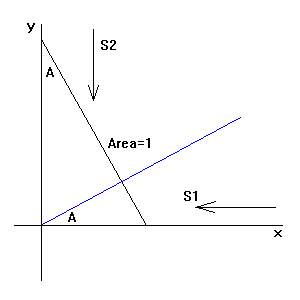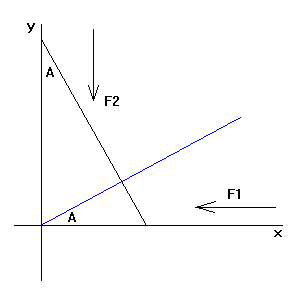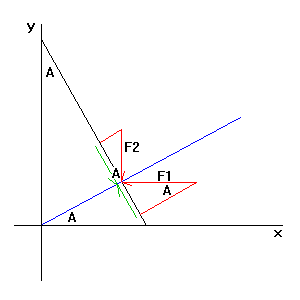Determine Sense of Shear Stress from Mohr Circle Data
Steven Dutch, Professor Emeritus, Natural and Applied Sciences,University of Wisconsin - Green Bay
 |
The plane shown here has both normal and shear stresses acting on
it. The MohrCircle construction enables us to determine the magnitude
and sign of thestresses. Normal stresses in this case are defined with
compression positive and tensionnegative. But what is the sense of shear
on this plane? The stress parallel to the x-axis is S1, that parallel to the y-axis is S2. To simplify conversions between stress and force, we assume the plane has unit area. The pole to the plane (in blue) makes an angle A with the x-axis. |
 |
Unfortunately, stresses can't be added as vectors, only forces can. Because the plane is tilted, stress S1 "sees" only part of the plane. The cross-sectional area viewed along the x-axis is cos A. Similarly, stress S2 "sees" only a small part of the plane; the cross-sectional area viewed along the y-axis is sin A. Since force equals stress times area, the force F1 exerted parallel to the x-axis is S1 cosA, and the force F2 exerted parallel to the y-axis is S2 sinA.
|
 |
To find the force acting parallel to the plane (the shear force), we find the components of F1 and F2 parallel to the plane (green arrows). These are acting in opposite directions, so the total force is their difference. Thus: Shear Force = F1 sin A - F2 cos A, and since the plane has unit area: Also, we know that: Shear Stress = ((S1 - S2)/2) sin 2A |
Return to Course Syllabus
Return to Techniques Manual Index
Return to Professor Dutch's Home Page
Created
22 November 2000; Last Update 22 November 2000